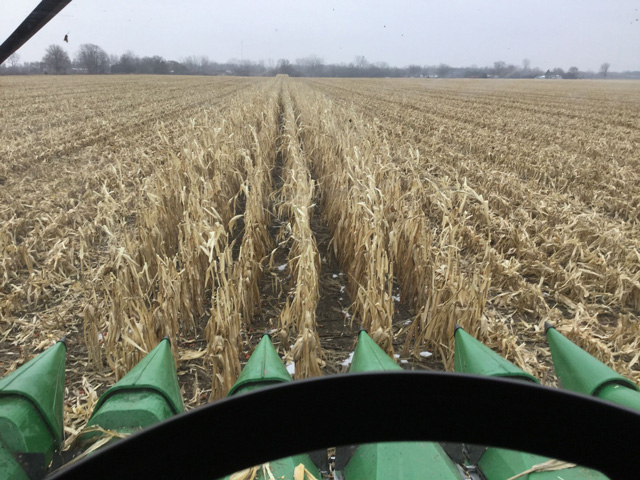2021 Net Farm Income Highest Since 2013
Higher Prices Boost USDA Net Farm Income Forecast
OMAHA (DTN) -- Higher prices are the main driver behind USDA boosting projected net farm income for 2021 to grow by $22 billion, or more than 23%, compared to last year as USDA updated its farm sector income forecasts on Wednesday.
Net farm income is projected now to hit $116.8 billion, the highest level since 2013. When adjusted for inflation, net farm income is forecast to increase $18.4 billion, or 18.7%, from 2020. In 2013, net farm income was $123.8 billion.
The higher farm income levels come via higher farm cash receipts for both crops and livestock, USDA's Economic Research Service stated in its December report. Farm cash receipts are forecast to increase $64.7 billion, or 17.8%, to $427.3 billion for the year.
Overall, the big driver for higher farm income stems from farmers and livestock producers seeing higher prices for their crops and animal products in 2021. USDA attributed price changes increasing $63.3 billion, accounting for 97.8% of the boost in farm cash receipts.
Combined corn, soybean and wheat farm cash receipts are forecast to rise by $35.3 billion for the year, or 36.4% higher than a year ago. Sorghum (23%), cotton (1.3%) and hay (23%) sales are also all higher.
-- Corn receipts are pegged at $24.4 billion, a 52.4% increase from 2020 due to higher prices and more production.
-- Soybean receipts are projected to increase $8.6 billion, or 20.8%, from a year ago due to higher prices.
P[L1] D[0x0] M[300x250] OOP[F] ADUNIT[] T[]
-- Wheat sales are forecast to increase $2.2 billion, or 25%, from 2020 because of higher prices offsetting lower production.
-- Higher sales for broilers, cattle and hogs also increased livestock cash receipts by $29.3 billion for the year, or 17.7%.
-- Cattle and calf sales are projected at $8.3 billion higher, or 13.2%, because of higher prices and more cattle sold.
-- Hog cash receipts were up $7.7 billion, or 40.1%, compared to 2020.
-- Milk sales are up $1.1 billion, or 2.8%, due to higher prices and more volume sold.
-- Broiler sales are expected to increase $10.5 billion, or 48.6%, compared to 2020 because of higher prices.
Yet, with all those rising numbers, USDA projected farm household income in 2021 to remain relatively flat at $82,315 for the median farm household.
With the focus on higher input prices right now, especially fertilizer, USDA pegs overall production costs to rise $29.8 billion for the year, or 8.3% higher than 2020. USDA noted nearly all categories of production costs increased, but feed for livestock and poultry were the highest drivers of increased costs.
Farmers and livestock producers saw higher earnings from their cash receipts and lower government payments. Direct government aid to producers is forecast at $27.2 billion, a 40.4% decline, or $18.5 billion lower than 2020. Much of the decline in government aid was due to lower supplemental and ad-hoc disaster assistance to farmers and ranchers because of COVID-19 compared to 2020 and the end of the Market Facilitation Program.
Farm sector equity is nominally higher at 2.8%, but actually declined by 1% after adjusting for inflation. The same can be said for real-estate assets, which also declined 1.7% in value when inflation is factored in.
Farm debt is projected to increase 2.9% as well in 2021 to $454.1 billion, but fall 0.8% when adjusted for inflation. Overall real-estate debt is forecast to remain relatively unchanged compared to 2020 when inflation is factored in as well. Working capital is projected to increase 9.6% for the year.
USDA's full report on projected farm income can be found at
Chris Clayton can be reached at Chris.Clayton@dtn.com
Follow him on Twitter @ChrisClaytonDTN
(c) Copyright 2021 DTN, LLC. All rights reserved.




